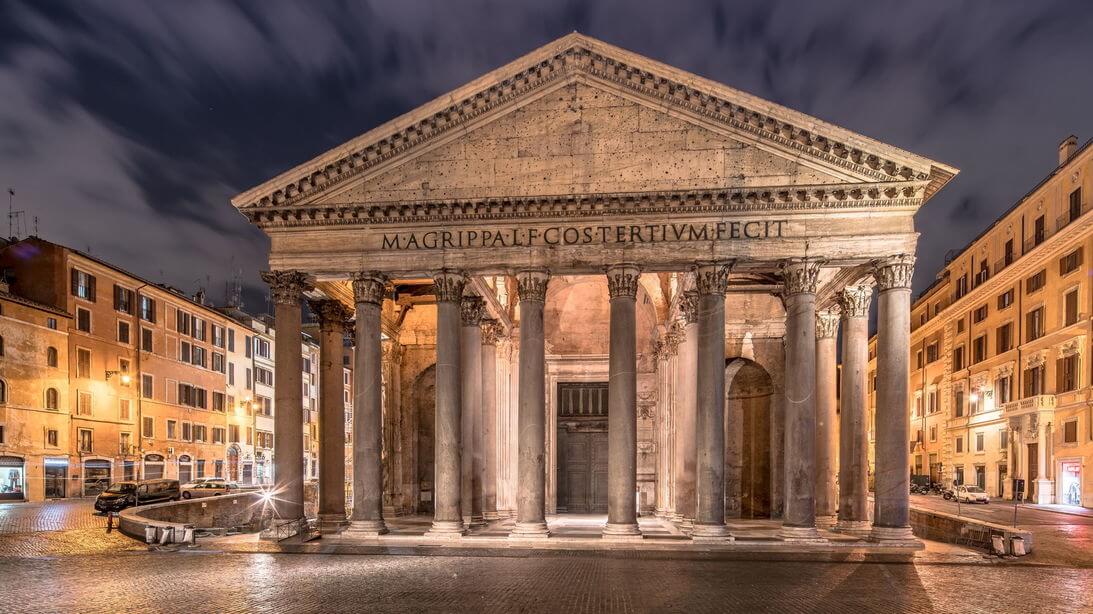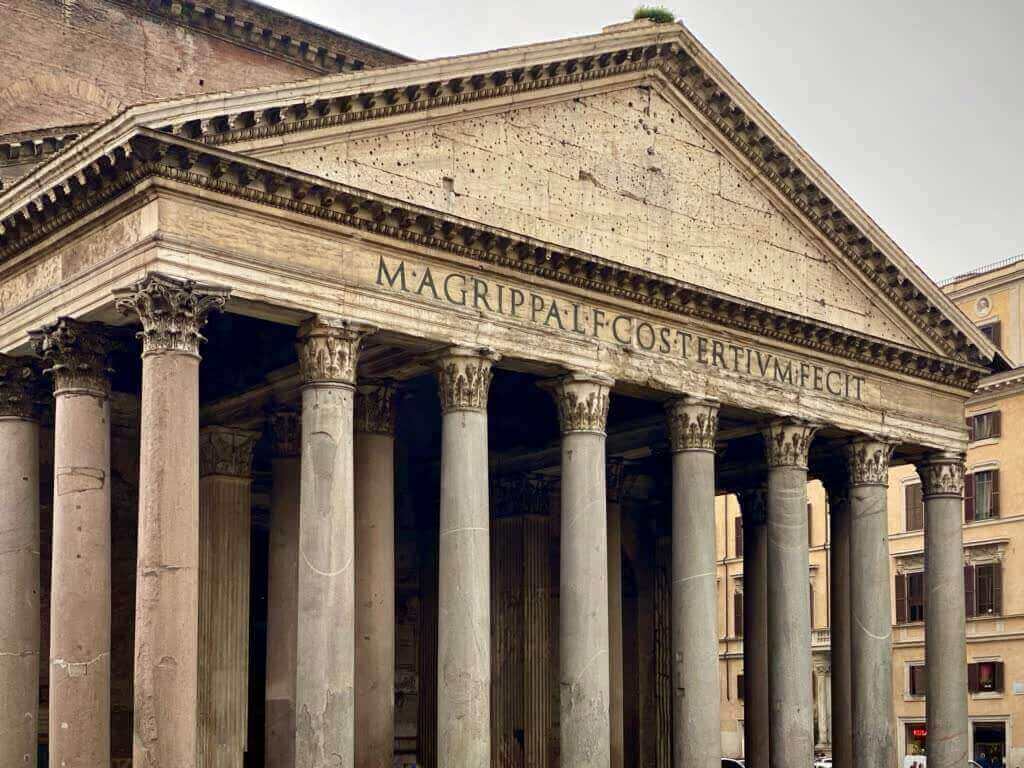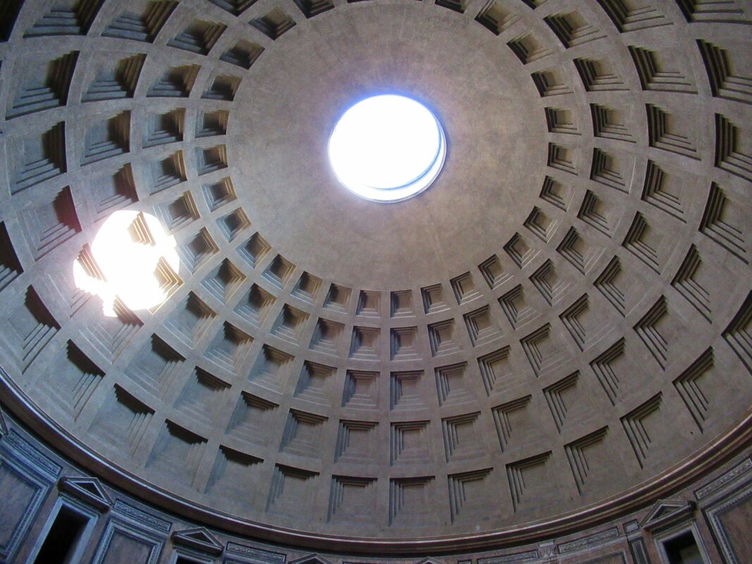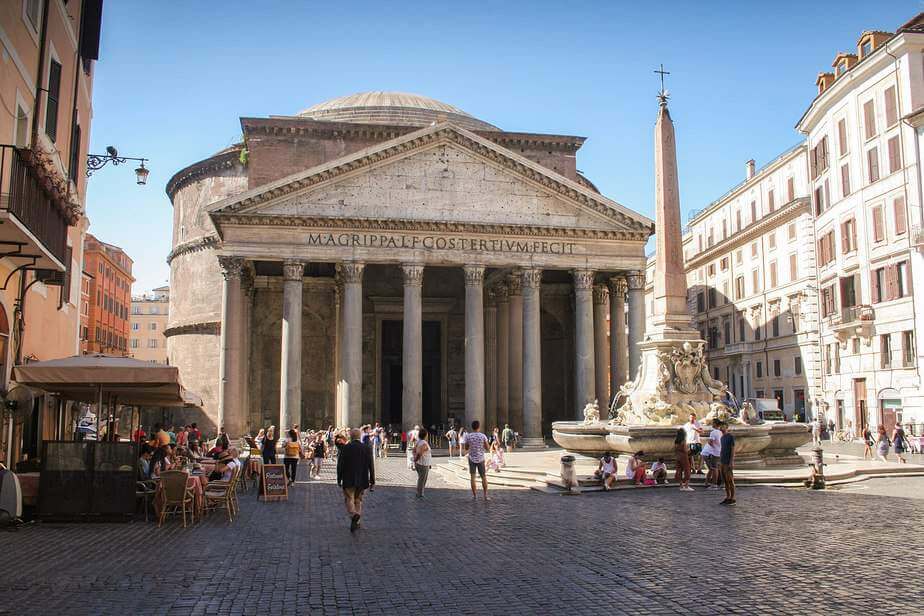Are you gonna visit the pantheon in a few days or have you already visited it? Don’t tell me you are standing right in front of it googling to get some extra information. In that case, let me be your virtual tour guide and spill 5 amazing facts about the roman pantheon.
It is the best-preserved ancient building in the entire Rome. Maybe that’s why it has been able to stand with most of its glory even 2000 years after its construction. That doesn’t mean that it had a sweet survival history. It has been attacked many times and endangered by misfortune.
 Image Source: discoverwalks.com
Image Source: discoverwalks.com
For this everyone has their own theory of its survival. Some say it has survived because it has adapted to changing times and some advocate the grace of the almighty god. No matter what its survival reason is, one thing I know for sure is it is a masterpiece.
No wonder Michelangelo admired it as “the work of angels, not humans.” when he first saw it. Let’s find out the top 5 things that add to the ancient aura of the pantheon.
1. The inscription written on the pantheon
I know I know. When you visit the pantheon and get a glance at its front door inscription, you are bound to wonder what that means! It’s actually nothing poetic or philosophic. The written inscription “M AGRIPPA L. F. COS TERTIUM FECIT” means M. Agrippa made it.
 Image Source: anamericaninrome.com
Image Source: anamericaninrome.com
Which is actually a bit misleading and not quite true. The pantheon that you see in the present day is the 3rd innovative version of it. And it’s not made by Agrippa. Agrippa built the first Pantheon in 27 BC during the reign of Augustus.
But for unfortunate events, it burned down. After that in 126 A.D emperor Hadrian rebuilt the temple on the exact location with the help of architect Apollodorus of Damascus. And it was Hadrian’s true generosity to retain the previous Agrippa’s inscription.
Hence it is said to be built by Agrippa but technically the credit goes to the emperor, Hadrian, and architect Apollodorus.
2. Pantheon has burned down 2 times
Yes, I have given you the spoiler of fact number 2 in fact number 1. The great pantheon of Roman history was all in flames twice in its lifetime. The first fire incident was the great fire of 80 AD.
Emperor Domitian rebuilt it after the brutal fire incident. But fortune smiled in scrutiny. The pantheon was struck by lightning and burned again in 110 AD. The pantheon that we see and know today was built in 120 AD by Emperor Hadrian.
Hadrian was passionate about architecture. He designed the present pantheon together with architect Apollodorus. Another lesser-known fact about Hadrian and Apollodorus is that Hadrian executed Apollodorus.
The reason? They had a solid argument about the design of the temple. And Apollodorus questioned Hadrian’s capability in architecture. As a result, he lost his life.
3. Largest brick dome for a millennium
Did you know the U.S. Capitol rotunda was inspired by the Roman pantheon? Doctor William Thornton the designer accepted it himself. Not only that, many neoclassical architectural masterpieces took inspiration from the ancient pantheon.
And why not? It has been the largest dome for 1300 years. It is still the largest unsupported dome in the world. Built 2000 years ago without any help from modern equipment. Can you even imagine that?
 Image Source: walksinrome.com
Image Source: walksinrome.com
The showstopper of the dome is its hole right in the middle. The circular oculus is also called The eye of the Pantheon. The only gateway for any kind of natural light inside the pantheon. And also rain.
The rumors say the pantheon is designed in such a way that the rain won’t hit the floor despite the big hole up. This is not so evident in modern times so the floor has tiny holes to drain the rainwater. Holes for a hole can keep the whole pantheon dry. Right?
To be precise about the size, the diameter of the dome is 43.30 meters. It maintains the perfect proportion between the floor and the walls. If you ask me, pantheon is a geometrical accuracy at its best.
So much of it without any support. The science behind it? Thanks to the physics and amazing foreseeing ability of ancient Roman architects. The dome’s walls are much thicker at the bottom so it spreads the massive load.
Blame Bernini a bit for messing with the beauty of the pantheon’s dome. The dome was originally covered in bronze before Bernini got his hands on it. He removed all the bronze of the pantheon and reused it to complete the Baldacchino in St. Peter’s Basilica.
Believe it or not, the pantheon has a larger dome than the St. Peter’s Basilica. For its flattened appearance, it is hard to get a full sense of its dimension.
Ready for some juicy myths? It was believed the Pantheon’s oculus was made by fleeing demons. True or not I find it very exciting to get the rumors behind art and architecture.
You can still enjoy a bit of fantasy from the oculus. Not flying demons. Sorry for ruining that. But you can see flying petals. A shower of thousands of rose petals is released from the oculus for occasions. It is a symbol of the Holy Spirit onto Christ’s apostles after his death.
4. It was a temple dedicated to Roman gods
Originated from Greek vocabulary the pantheon means all the Gods. From this, it is believed that this temple was built for the purpose of worshipping all the Roman Gods or Gods of Greek mythology. Hold your horses all the Greek mythology Percy Jackson fans. Nothing is proven yet. Still, you can enjoy the benefit of the doubt.
On the other hand, Roman historian Cassius Dio said it is so titled because its dome resembles the heavens. Basically, a spiritual connection theory of the pantheon, the oculus, and the Gods is there. But to survive the course of time the pantheon has changed its purpose several times.
Maybe the most significant change occurred when it converted into a Christian church in the 7th century. In the year 609 AD, it officially started functioning as a Christian church. Many say that this change was vital for the survival of the pantheon.
As many ancient roman religious architecture couldn’t make it till the modern time. But pantheon did. Because it turned its purpose towards Christianity and people came forward to preserve it or in other words not destroy it for religious sentiments.
After the conversion, it is called the Basilica di Santa Maria ad Martyres. But the popular name is still pantheon. Whether or not this conversion really helped the pantheon to survive the course of time. all the fellow Roman monuments had been shattered by this time.
5. The Columns Are One Solid Piece Of Stone
Pantheon is an architectural phenomenon. As I have mentioned earlier much modern-day neoclassical architecture is inspired by the pantheon. And the oculus and the unsupported dome are not the only reasons for that.
 Image Source: Pinterest
Image Source: Pinterest
The lovely columns that we see at the entrance of the pantheon are each uncut stone straight from Egypt. Yes, to prove the legacy of the roman empire these stones were shipped from Egypt and dragged to the pantheon by human hands and elephants.
Beautiful columns are common in Roman architecture. But most of them are pieces of stones piled up then piled to give the uncut finish. Unlike the pantheon, each column is an uncut stone with a height of 48ft (15m).
Bonus
Pantheon is a masterpiece to be more experienced rather than told. But I can’t stop telling you amazing facts about the pantheon. So here’s a bonus.
Have you been to the Vatican museum? Heard about the famous artist Raphael? His last remains are buried right here on the pantheon. The famous painter died at a young age 37 in 1520. He was called the ‘Prince of Painters’.
His tombstone was written by Pietro Bembo. Which reads “Here lies that famous Raphael by whom Nature feared to be conquered while he lived, and when he was dying, feared herself to die with him.” These words made my heart twirl. literally!
Not only the Raphael pantheon is the final resting place of many famous individuals. Ancient kings of Italy such as Vittorio Emanuele II and Umberto I are buried here. Alongside his beloved wife Queen Margherita. The famous Margherita pizza that we all love was inspired by her name.
Wrapping up
From having close ties with Roman history to an architectural masterpiece built 2000 years ago. The Roman pantheon is surely way ahead of its time. Everything is related to facts and figures from its geometric patterns on the floor to the nine-meter-wide circular hole in the roof.
So if you are gonna visit it soon I hope now you will see the pantheon in a bit of a different light. Because everything makes a lot more sense when you know the reason & story behind it. Have a great visit with the myth and magic of the pantheon. Ciao.


